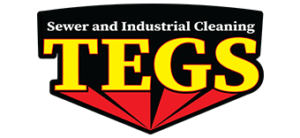Understanding the Importance of Dry Suction in Power Plants
Dry suction plays a critical role in maintaining the efficiency and safety of power plants. This technique involves removing debris from various surfaces and machinery within the plant. Unlike wet suction, which uses liquids to capture and remove debris, dry suction relies on vacuum technology to clean areas without introducing moisture. This is particularly important in power plants, where the presence of water could lead to equipment corrosion or electrical hazards.
Ensuring that power plants remain free from debris is crucial for several reasons. Accumulated debris can interfere with the operation of sensitive equipment, leading to inefficiencies and potential breakdowns. Moreover, it can pose a significant fire hazard, especially in environments where flammable materials or high temperatures are present. By using dry suction methods, we can effectively mitigate these risks and maintain a clean and safe working environment.
We have found that dry suction is especially effective in reaching tight spaces and components that are difficult to clean with traditional methods. This precision allows us to keep all areas of the power plant clean, from large turbine rooms to small control panels. By incorporating dry suction techniques into our regular maintenance routines, we can enhance the longevity and performance of power plant equipment, ensuring smooth and uninterrupted operations.
Why Dry Suction is Essential for Power Plant Operations
Dry suction is an essential method for maintaining the cleanliness and efficiency of power plant operations. One key reason is that it effectively removes debris from various areas without introducing moisture. This is crucial because moisture can lead to corrosion of metal components and create electrical hazards, both of which can be detrimental to power plant machinery and safety.
Another vital aspect of dry suction is its role in fire prevention. Scattered debris can pose a significant fire risk in power plants. Debris near high-temperature areas or electrical components can easily ignite, causing fires that could lead to severe damage and safety hazards. Regular dry suction minimises this risk by removing potential fuel sources, helping to keep the environment safer for both the equipment and the personnel working in the plant.
Advantages of Using Dry Suction Technologies
There are several advantages to using dry suction technologies in power plants. Firstly, dry suction provides a thorough and efficient method of cleaning hard-to-reach areas. Power plants consist of complex machinery with numerous small and often inaccessible parts. Dry suction equipment is designed to navigate these spaces easily, ensuring that all areas are kept free from debris.
Secondly, dry suction is highly efficient in reducing maintenance costs. Removing debris before they can cause significant damage helps to prolong the lifespan of equipment. By using dry suction regularly, we can avoid the expenses associated with repairs and replacements. This preventive approach not only saves money but also ensures that the power plant operates smoothly.
Additionally, dry suction technologies offer environmental benefits. Traditional cleaning methods often require the use of cleaning chemicals, which can be harmful to the environment. Dry suction, on the other hand, solely relies on vacuum technology, making it a more eco-friendly option. By reducing the need for chemicals, we contribute to a safer environment both inside and outside the power plant.
Implementing these advanced cleaning technologies also improves worker safety. A cleaner work environment is a healthier work environment, resulting in fewer sick days and a more productive workforce.
In summary, the advantages of dry suction technologies extend beyond just cleanliness. They enhance operational efficiency, lower maintenance costs, provide environmental benefits, and improve worker safety, making them an invaluable asset in power plant maintenance.
Best Practices for Implementing Dry Suction in Power Plants
To maximise the benefits of dry suction, it’s important to follow best practices for its implementation in power plants. One essential practice is to conduct routine inspections. Regularly checking the areas that require cleaning ensures that debris is identified and removed before it can accumulate. This proactive approach helps in maintaining the efficiency and safety of the plant.
Another crucial step is to invest in high-quality dry suction equipment. Reliable and efficient machinery ensures that cleaning is performed thoroughly and quickly. It’s also essential to train staff on the proper use of the equipment. Proper training ensures that the equipment is used correctly and safely, maximising its effectiveness and extending its lifespan.
Scheduling regular maintenance for the dry suction equipment is another best practice. Regular maintenance prevents the equipment from breaking down unexpectedly and ensures it continues to operate at peak performance. Maintenance tasks should include checking for wear and tear, replacing filters and other consumable parts, and verifying that the vacuum system is operating at the correct pressure.
Additionally, integrating dry suction into the overall maintenance strategy of the power plant is vital. This means coordinating dry suction activities with other cleaning and maintenance tasks to create a comprehensive plan. By doing so, we ensure that all aspects of the plant are clean and well-maintained, contributing to overall operational efficiency.
Conclusion
Understanding the importance of dry suction in power plants highlights how crucial it is to maintain efficient and safe operations. Dry suction provides a reliable and effective solution for removing debris from complex machinery and tight spaces, ensuring the smooth functioning of critical equipment. By adopting best practices for implementation, including routine inspections, investing in quality equipment, training staff, and scheduling regular maintenance, we can maximise the benefits of dry suction technologies.
The use of dry suction not only reduces maintenance costs but also enhances environmental sustainability and improves worker safety. A clean and well-maintained power plant operates more efficiently, experiences fewer breakdowns, and provides a safer working environment for all employees.
If you’re looking to improve the cleanliness and efficiency of your power plant, consider the benefits of dry suction technologies. For expert advice and professional services, reach out to us at TEGS Thailand. Our team is ready to assist you with effective solutions tailored to your specific needs.




